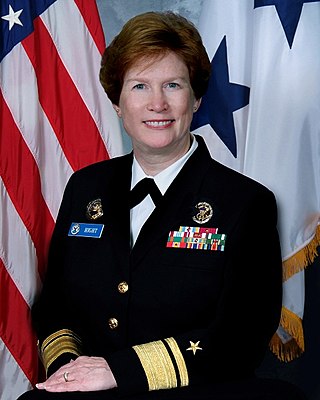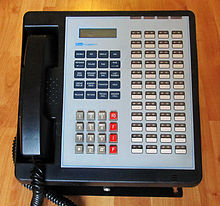
MIL-STD-188 is a series of U.S. military standards relating to telecommunications.

The Defense Information Systems Agency (DISA), known as the Defense Communications Agency (DCA) until 1991, is a United States Department of Defense (DoD) combat support agency composed of military, federal civilians, and contractors. DISA provides information technology (IT) and communications support to the President, Vice President, Secretary of Defense, the military services, the combatant commands, and any individual or system contributing to the defense of the United States.
Voice over Internet Protocol (VoIP), also called IP telephony, is a method and group of technologies for voice calls for the delivery of voice communication sessions over Internet Protocol (IP) networks, such as the Internet.

The Automatic Voice Network was a worldwide American military telephone system. The system was built starting in 1963, based on the Army's existing Switch Communications Automated Network (SCAN) system.
The Defense Switched Network (DSN) is a primary information transfer network for the Defense Information Systems Network (DISN) of the United States Department of Defense. The DSN provides the worldwide non-secure voice, secure voice, data, facsimile, and video teleconferencing services for DOD Command and Control (C2) elements, their supporting activities engaged in logistics, personnel, engineering, and intelligence, as well as other Federal agencies.

STU-III is a family of secure telephones introduced in 1987 by the NSA for use by the United States government, its contractors, and its allies. STU-III desk units look much like typical office telephones, plug into a standard telephone wall jack and can make calls to any ordinary phone user. When a call is placed to another STU-III unit that is properly set up, one caller can ask the other to initiate secure transmission. They then press a button on their telephones and, after a 15-second delay, their call is encrypted to prevent eavesdropping. There are portable and militarized versions and most STU-IIIs contained an internal modem and RS-232 port for data and fax transmission. Vendors were AT&T, RCA and Motorola.

Secure Terminal Equipment (STE) is the U.S. government's current, encrypted telephone communications system for wired or "landline" communications. STE is designed to use ISDN telephone lines which offer higher speeds of up to 128 kbit/s and are all digital. The greater bandwidth allows higher quality voice and can also be utilized for data and fax transmission through a built-in RS-232 port. STE is intended to replace the older STU-III office system and the KY-68 tactical system. STE sets are backwards compatible with STU-III phones, but not with KY-68 sets.

Project 25 is a suite of standards for interoperable digital two-way radio products. P25 was developed by public safety professionals in North America and has gained acceptance for public safety, security, public service, and commercial applications worldwide. P25 radios are a direct replacement for analog UHF radios, but add the ability to transfer data as well as voice, allowing for more natural implementations of encryption and text messaging. P25 radios are commonly implemented by dispatch organizations, such as police, fire, ambulance and emergency rescue service, using vehicle-mounted radios combined with repeaters and handheld walkie-talkie use.
The Automatic Secure Voice Communications Network (AUTOSEVOCOM) was a worldwide, switched, secure voice network for the United States Armed Forces, which was operational from the late 1960s to the end of the 1980s. It was closely related to the Automatic Voice Network or AUTOVON, which was the main non-secure switched telephone network for the military.

The White House Communications Agency (WHCA), originally known as the White House Signal Corps (WHSC) and then the White House Signal Detachment (WHSD), was officially formed by the United States Department of War on March 25, 1942 under President Franklin D. Roosevelt. The organization was created to provide secure normal, secret, and emergency communications requirements in support of the president. The organization provided mobile radio, Teletype, telegraph, telephone and cryptographic aides in the White House and at "Shangri-La". The organizational mission was to provide a premier communication system that would enable the president to lead the nation effectively.
The Defense Information System Network (DISN) has been the United States Department of Defense's enterprise telecommunications network for providing data, video, and voice services for 40 years.

The NATO Communication and Information Systems Services Agency , was a service provider to its NATO and national customers. Wherever NATO deployed on operations or exercises, NCSA was there, providing communication and information systems (CIS) services in support of the mission. Equally important, NCSA supported NATO's ten major headquarters in Europe, North America, and Asia.
The Defense Data Network (DDN) was a computer networking effort of the United States Department of Defense from 1983 through 1995. It was based on ARPANET technology.
The Worldwide Military Command and Control System, or WWMCCS, was a military command and control system implemented for the command and control of the United States military. It was created in the days following the Cuban Missile Crisis. WWMCCS was a complex of systems that encompassed the elements of warning, communications, data collection and processing, executive decision-making tools and supporting facilities. It was decommissioned in 1996 and replaced by the Global Command and Control System.

The Deployable Joint Command and Control system, commonly known as DJC2, is an integrated command and control headquarters system which enables a commander to set up a self-contained, self-powered, computer network-enabled temporary headquarters facility anywhere in the world within 6 – 24 hours of arrival at a location.

Elizabeth Ann Hight is a retired United States Navy rear admiral who served as the vice director of the Defense Information Systems Agency (DISA). She assumed this post in December 2007. In 2008, she was nominated for appointment to the grade of vice admiral and assignment as director, Defense Information Systems Agency; commander, Joint Task Force – Global Network Operations; and deputy commander, U.S. Strategic Command Global Network Operations and Defense, Arlington, Virginia. Her nomination was rejected by the Senate due to a perceived conflict of interest with her husband, retired Air Force Brigadier General Gary Salisbury, who is vice president of business development and sales for Northrop Grumman Corp.'s mission systems sector, defense mission systems division. She retired from the Navy in 2010.

PM WIN-T is a component of Program Executive Office Command, Control and Communications-Tactical in the United States Army. PM WIN-T has been absorbed into PM Tactical Networks as Product Manager for Mission Networks.

U.S. Army Lieutenant General Alan R. Lynn was the Director, Defense Information Systems Agency at Fort Meade, MD.
The Joint Information Environment (JIE) is a single, joint, secure, reliable and agile command, control, communications and computing enterprise information environment to which the Department of Defense (DoD) is transitioning in a first-phase implementation that spans fiscal years 2013 and 2014.

The Joint Communications Support Element (Airborne) (JCSE) is a United States Department of Defense (DoD) standing joint force headquarters expeditionary communications provider that can provide rapid deployable, en route, early entry, and scalable command, control, communications, and computer (C4) support to the unified combatant commands, special operations commands, and other agencies as directed by the Joint Chiefs of Staff. On order, the JCSE can provide additional C4 services within 72 hours to support larger combined joint task force headquarters across the full spectrum of operations. JCSE is part of the Joint Enabling Capabilities Command (JECC), a subordinate command of the U.S. Transportation Command (USTRANSCOM).













